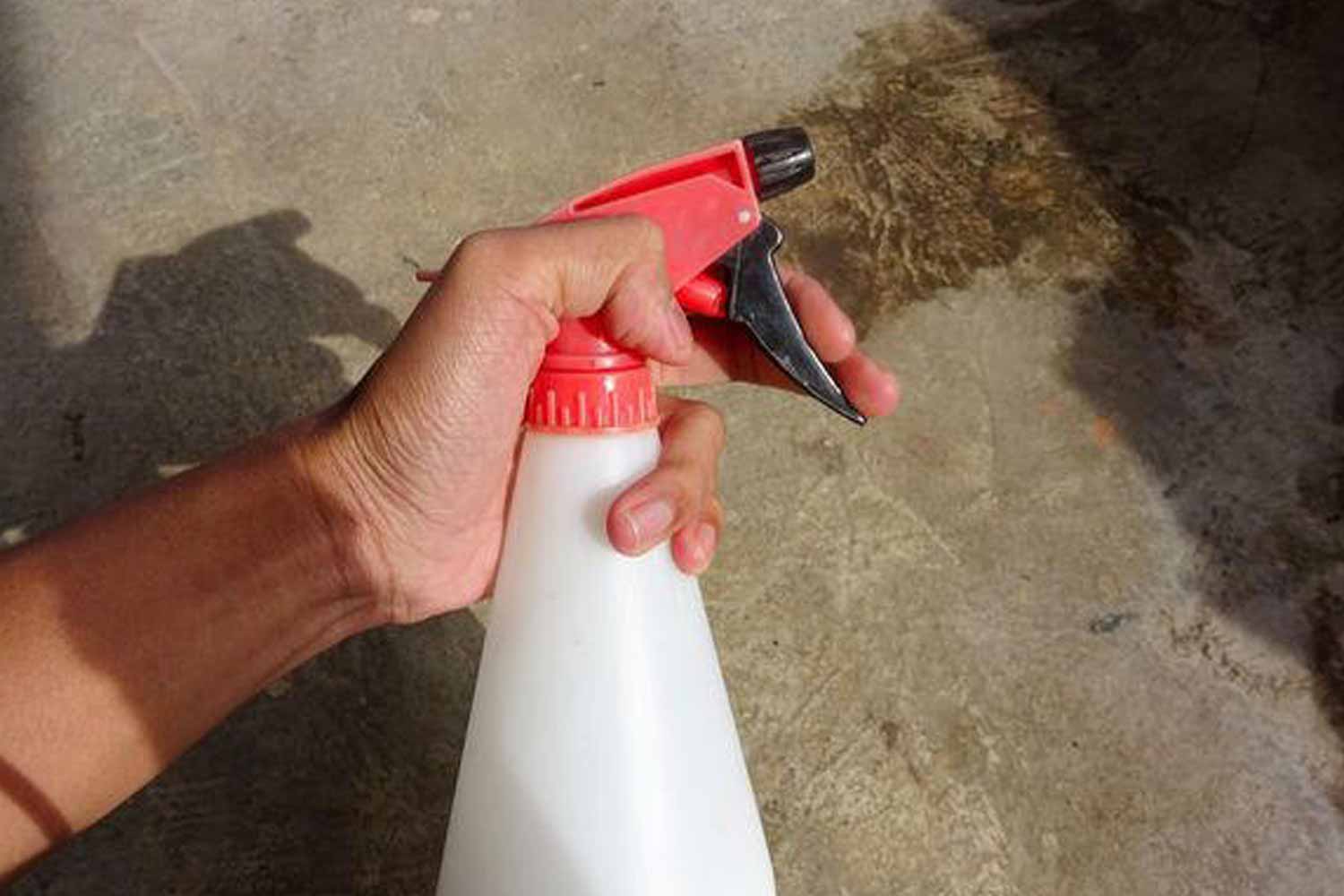Something ordinary can turn surprisingly useful when nature starts to shift. The outdoors necessitates a minor adjustment to routine as the days grow cooler. A straightforward, frequently disregarded household item unexpectedly turns into a silent ally for patios and garden pathways. With only a few sprays, it transforms familiar corners into safer, calmer spaces through an approach that feels almost too simple to work. Yet the idea spreading among gardeners this season proves that timing, and vinegar, might make all the difference.
Why patios respond well to vinegar sprays
Spiders move inside when nights cool, seeking shelter through cracks and narrow gaps. Patios and paths sit right beside those routes, so they make perfect treatment zones. A scent barrier here reduces traffic at the doorstep, which means fewer webs indoors and far fewer jump scares.
A light mist of white vinegar creates that barrier. The smell is strong to spiders, yet the mix is non-toxic. Because it doesn’t kill, it nudges them away instead. The method is quick, cheap, and friendly to daily routines, so you can repeat it after rain without fuss.
Use a clean spray bottle and cover edges, joints, and expansion lines. Sweep first to remove debris, then mist lightly. Let the paved surface dry before foot traffic. For thresholds, hold the nozzle low and steady. Aim for corners, where tiny routes converge, and refresh the strip weekly.
How scent disruption stops spiders at the threshold
Spiders “smell” with chemoreceptors on their legs, reading faint chemical signals in the air. An acidic odor overwhelms those sensors, so navigation falters near treated areas. Because orientation relies on steady cues, a sharp scent cloud encourages a turn-around rather than a bold entry.
In a spray bottle, mix half water and half white vinegar. Cleaning expert Liam Cleverdon, Director at Flooring King, backs this simple ratio. He advises spritzing door frames, window ledges, and corners. Small, regular passes work best. Wide soaking isn’t needed and may waste product.
Indoors, the same approach holds, though surfaces need a check. The solution is safe for common materials, yet gentle use keeps households happier. Because spiders avoid the zone instead of dying, it’s a neat, humane tactic. The spray stands beside essential-oil methods, offering a budget-friendly alternative.
Simple add-ons and mistakes to avoid at home
Be sure to keep vinegar spray away from any wood that is varnished or polished. Although finishes often dull over time, tentatively test a hidden spot if you are concerned. If you are informed cleaning metal fixtures, then mist a cloth and wipe the fixture instead of directly spraying. Lightly and evenly covering the surface will help prevent streaks, while also keeping the appearance clean and fresh.
A second line is provided by peppermint. Place cotton balls that have been soaked in essential oil on door frames or windowsills. Robert Collins, a pest expert, advises mixing 15 to 20 drops with water to create a spray. Use the bottle where you notice traffic. Refresh when the scent fades.
Plants can help, too. Several species deter spiders, though some aren’t pet-safe, so check before planting. Tidy corners and clear webs often, because clutter invites nests. If you wonder about webs without spiders or whether to squish, know there are calmer options that work consistently.
Numbers, timing, and where the barrier works best
Spider activity peaks from September to early November, so treat during that window. Reapply the vinegar mix after downpours or heavy hose use. Because water dilutes aromas, a light follow-up restores the shield. Edges near steps, drains, and garage thresholds deserve special attention every few days.
This method is deterrence, not destruction. The solution won’t kill spiders; it makes them scurry away. Households with kids appreciate that. Pet owners do, too. Outdoors, odors fade faster, so frequency beats force. Indoors, spot-treat corners and baseboards, then ventilate rooms for comfort.
Cleverdon recommends steady, focused spritzing rather than drenching. Door frames, window ledges, and room corners matter most. Aim for even bands, much like caulking, yet reversible. Because the spray is simple, you can pair it with crack sealing and screens. Each layer reduces indoor sightings.
Beyond hardscape, extra barriers with vinegar and scent allies
Paths and patios lead to utility entries, sheds, and garages. Reserve vinegar for stone, tiles, and concrete. Around timber trims, treat the ground line, then wipe frames with a slightly damp cloth. Cotton balls tucked into gaps add staying power where spray won’t hold.
Decluttering matters because spiders love quiet corners. Sweep webs, then wipe rails and sills. Seal tiny holes with exterior filler. While you clear storage, lift boxes and rotate items, which disturbs nesting. These small chores support the scent shield and keep routes unpredictable.
If you like green help, look at spider-repelling plants. Place them where pathways funnel movement, though confirm pet safety first. For autumn concerns beyond spiders, watch for stink bugs near vents. Finally, track hiding spots you uncover. Patterns guide future spritzing and make each pass count.
One quick seasonal habit that keeps spiders outside
Treat the margins now, because the season demands it. A small bottle and steady routine beat anxious nights. When you keep the path line fresh, vinegar becomes a reliable gatekeeper. Spiders choose easier routes, webs stay outdoors, and thresholds feel calmer. Simple steps, repeated well, deliver control.
